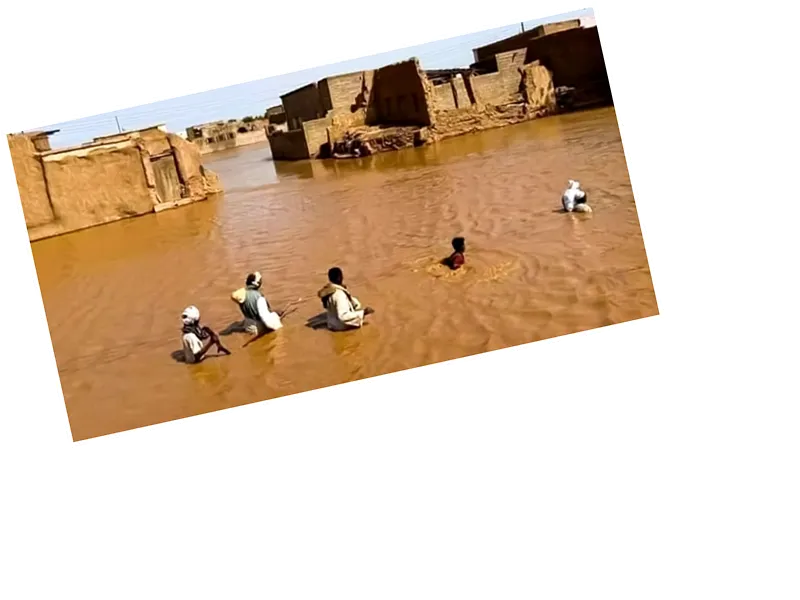The recent catastrophic collapse of the Arbaat Dam in Sudan has left a devastating impact on the region, particularly affecting the city of Port Sudan, which relies heavily on the dam for its water supply. With a storage capacity of 25 million cubic meters, the dam's failure due to excessive rainfall has resulted in at least 30 confirmed deaths, with hundreds more missing according to the United Nations Office for the Coordination of Humanitarian Affairs (OCHA). The torrential waters not only swept away properties, including vehicles, but also led to the destruction of thousands of homes and loss of livestock, exacerbating an already dire humanitarian situation.
Social media has been abuzz with reactions to the disaster, with many citizens attributing the dam's collapse to Sudan's ongoing security issues and inadequate infrastructure. Activist Hind Abu Bakr lamented the fragility of homes, stating they were destroyed 'like biscuits.' Others called for a comprehensive review of the country's dam infrastructure and maintenance, highlighting the urgent need for improvement in disaster preparedness and response.
The situation is further complicated by the ongoing drinking water crisis in Port Sudan, as the dam was the primary source of water for the city. With repeated failures of water supply systems and reliance on desalination plants, the community faces an uphill battle in securing essential resources. The government's emergency response has reported a total of 132 fatalities due to floods across 10 states, with rescue operations underway to assist those stranded by the rising waters. As Sudan experiences its peak rainfall season from June to October, the need for effective infrastructure and disaster management has never been more critical.
- In the wake of the dam collapse, the government has mobilized an army force to assist in rescue operations, while the Red Crescent has provided essential meals and water to affected residents. The widespread destruction caused by the flooding has prompted calls for urgent infrastructural reforms and a reevaluation of the country's water management strategies.
- The collapse of the Arbaat Dam highlights the vulnerability of Sudan's infrastructure, particularly in light of the country's historical challenges, including conflict and political instability. Experts argue that without significant investment in infrastructure and disaster management, the nation will continue to face severe humanitarian crises during extreme weather events.






